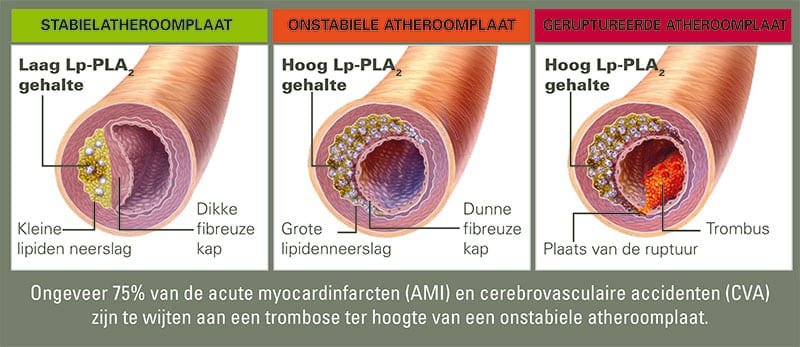Cardiovascular risk assessment at the Linus Pauling Prevention Center


Biomarkers, genetics and systems insights for a preventive approach to cardiovascular disease
At the Linus Pauling Prevention Center, we do not look at cardiovascular health purely through classical risk factors such as cholesterol, blood pressure and smoking behavior. While these parameters obviously remain relevant, they often fall short of accurately assessing individual risk, especially in asymptomatic or metabolic healthy individuals.
Therefore, we use a comprehensive set of functional biomarkers and genetic risk modulators, which together provide a deeper and more personalized picture of subclinical atherosclerosis, inflammation, oxidative stress, lipid balance and genetic vulnerability.
Key biomarkers and risk markers
Oxidized LDL (ox-LDL)
Provides insight into the extent to which LDL cholesterol is under oxidative stress – a key factor in plaque formation and endothelial damage.
Lipoprotein-associated phospholipase A2 (Lp-PLA2)
An enzyme associated with unstable plaques and vascular inflammation.
Lipoprotein(a) - Lp(a)
A genetically engineered lipoprotein that is highly atherogenic and thrombogenic.
Homocysteine
A methylation marker with close links to endothelial damage, thrombus risk and neurovascular damage.
hsCRP (high sensitivity C-reactive protein)
A sensitive measure of low-grade inflammation – highly correlated with cardiovascular and cerebrovascular risk.
Omega-3 index
Reflects the amount of EPA + DHA in red blood cell membranes.
Remnant cholesterol (RC)
The cholesterol content of triglyceride-rich lipoproteins (VLDL, IDL).
Apolipoprotein B and A1 (ApoB / ApoA1 ratio).
The ratio provides a more accurate estimate of atherogenic potential than LDL per se.
Non-HDL cholesterol
Sum of all atherogenic cholesterol fractions (LDL, VLDL, IDL, Lp(a)).
ProBNP (N-terminal pro B-type natriuretic peptide)
Subclinical marker for myocardial stress or incipient heart failure.
Lipoprint research
Provides a refined picture of LDL subtypes.
Genetic and epigenetic risk modulators
ApoE genotyping (ApoE4 carrier).
Associated with increased risk of atherosclerosis, hyperlipidemia and neurovascular aging.
Haptoglobin polymorphism
Evaluation of salt sensitivity in the context of hypertension and iron-mediated oxidative stress.
From measurement to action: integration into the medical consultation
At the Linus Pauling Prevention Center, we consider these tests not as “screening packages,” but as building blocks in a thoughtful, patient-centered risk assessment. We combine this data with:
– Imaging (such as coronary calcium score, echocardiography, duplex doppler, DEXA,…)
– Clinical data, family history and lifestyle profile
– Inflammatory, glycemic, mitochondrial and hormonal biomarkers
– Dietary and nutrient status
– Epigenetic and telomere data, if relevant
Top medicine starts with precision and prevention
The cardiovascular cause of death remains number one worldwide. Early identification of risks – especially in apparently healthy people – is not a luxury, but a medical-ethical duty.
The Linus Pauling Prevention Center aims to make these risks visible and manageable through a new form of medicine: personalized, informed, preventive.
